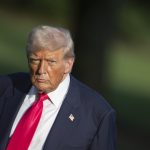Yo, hold onto your hats because Jamie Dimon, the big boss over at JPMorgan Chase—the guy who basically runs Wall Street’s heartbeat—just dropped a bombshell that’s got the global markets twitching. He’s warning about an inevitable “crack” in the U.S. bond market—a fissure so serious it could rattle government budgets, global economies, and every investor clutching those supposedly “safe” Treasury securities. Let’s break down this ticking time bomb and see why Dimon’s sounding the alarm like a Brooklyn bouncer tossing out party crashers.
The Brewing Storm in the U.S. Bond Market
Dimon’s fear isn’t just market chatter; it’s rooted in the twisted aftermath of government and Fed policies pushing the economy on a caffeine high. Since the financial crisis, the Fed’s gone full throttle on quantitative easing—buying mountains of government bonds to keep the cash flowing—and Washington’s been on a spending spree that would make a shopaholic blush. This combo inflated the national debt to a whopping crescendo, and Dimon calls it “massively overdone.” Think of it as inflating a balloon past its limit; eventually, it’s gonna pop—or, more accurately, crack.
Treasury bonds underpin the global financial system—they’re like the rock-solid foundation beneath a skyscraper. But with this debt bonanza, the foundation’s showing stress fractures. When Dimon says a crack is “going to happen,” he’s not playing the guessing game; it’s a matter of when, not if. Whether that’s six months or six years down the line, the impact could be enough to send investors into a panic stampede, shaking confidence in the U.S. government’s ability to manage its finances. Bond prices would tumble, yields would skyrocket, and borrowing would get more costly—not just for Uncle Sam, but for corporations and consumers too. That cocktail could throttle economic growth or even spark a recession.
Fiscal Imbalance: The Root of the Crack
At the heart of this “crack” is America’s fiscal mess: exploding national debt driven by runaway budget deficits and costly entitlement programs. Dimon isn’t just waving a red flag; he’s telling policymakers to “get our act together”—meaning, whip those deficits into shape or face the fallout. The catch? Without corrective action, the Treasury market’s instability might force the Fed to step in directly to keep yields under control, playing a dangerous monetary policy game with no guarantees.
What adds spice to this fiscal stew is Dimon’s call for reforms, including taxing carried interest—an unpopular but effective revenue booster aimed at big investors. This isn’t just Wall Street talk; it’s about digging the U.S. out of a debt hole before it becomes a debt canyon. Such fiscal discipline could stabilize the bond market and help slacken the noose tightening around future borrowing costs.
Geopolitics and Market Volatility: The Wider Battlefield
Dimon doesn’t view the bond market in isolation; he pins part of the tension on the geopolitical front. China’s shadow looms large as a strategic rival, but Dimon stresses that financial stability at home takes precedence. Trade disputes, tariff tussles, and tariff-triggered market disruptions threaten to push the already fragile U.S. economy toward recession. Investors are watching bond yields like hawks, as rising yields translate to pricier borrowing that can ripple painfully across stock and credit markets.
This volatility might herald the return of “bond vigilantes,” investors who punish fiscal irresponsibility by dumping bonds, forcing yields even higher. If they come back en masse, expect a liquidity squeeze and market rollercoaster rides. Despite this storm brewing, JPMorgan is braced for the chaos, eyeing interest rates climbing to 5% or more and hunting for volatility-driven trading chances while others scramble in panic.
All in all, Dimon’s message is crystal clear: the U.S. bond market is teetering on the edge thanks to reckless fiscal and monetary policies, tangled with geopolitical headwinds. If America doesn’t straighten its fiscal spine soon, the “crack” in its financial armor could burst wide open, shaking the foundation of global finance. Investors and regulators alike need to gear up for a wild era where uncertainty reigns and smart, sober fiscal moves will be the only way to dodge a full-blown crisis. Bam—there it is, the bubble’s primed to pop, whether you’re ready or not.







